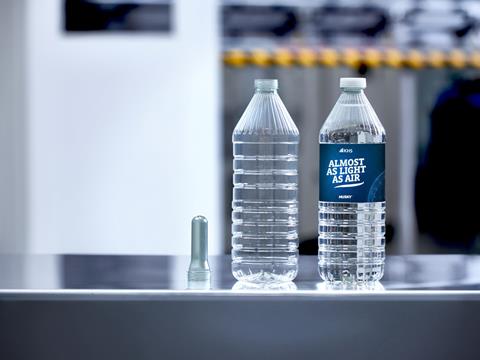
KHS and Husky have launched one of the world’s lightest PET bottles that uses just 5.89 grams of material to hold 591 millilitres of liquid.
At drinktec 2017 KHS presented this concept as a feasibility study that featured a PET bottle weighing approximately five grams with a capacity of 500 milliliters. A number of changes have since been made to further the development.
As KHS packaging designer Fabian Osterhold in Hamburg explains, “With such extreme lightweighting, what’s known as the top load is especially important. This value tells us how sturdy the bottle is from a vertical perspective. It determines whether the container can be stacked or not and survive transportation undamaged.”
To increase stability, the shoulder design of Factor 101 has been modified and the bottle body reinforced with functional webbing. Moreover, Osterhold and his colleagues have developed a base with a pop-in effect.
Here, KHS says that the base pops inwards to a certain degree when a top load is applied, increasing the internal pressure and therefore the stability of the bottle.
Two hundred newtons is a common top load threshold in the industry; at 220 newtons, the Factor 101 exceeds this.
In order to achieve this value for a PET bottle used for still beverages, adapting just the container shape wasn’t enough. “The preform design also needed to be developed further,” says Osterhold. This is why KHS joined forces with Husky.
Technically speaking, the stretching factors from blank to bottle and the resulting preform dimensions were especially important here.
The relation of length to wall thickness is particularly relevant to injection molding. In this context, KHS addressed the specifications and feasibilities of the stretch blow molder and bottle design, while Husky made the necessary modifications to the preform.
“The focus here was on the exact profiling of the preform made possible by KHS technology,” Osterhold ascertains. “Focus lamps in the heater on our InnoPET Blomax Series V, for example, make for extremely precise temperature profiling directly under the bottle neck ring. This ensures that no material stays unstretched. In turn, this considerably reduces the amount of plastic used.”
KHS says that, when compared to the standard lightweight PET container holding 500 millilitres of still water that usually weighs seven grams on the US market, the joint KHS/Husky product requires 30% less material. It can also be manufactured entirely from rPET.
If you liked this story, you might also enjoy:
The ultimate guide to the Packaging and Packaging Waste Regulation in 2025
How are the top brands progressing on packaging sustainability?
Everything you need to know about global packaging sustainability regulation in 2025
The key to increasing the use of reusable packaging in supermarkets

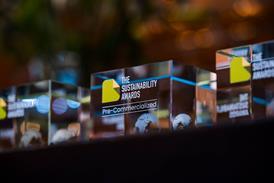
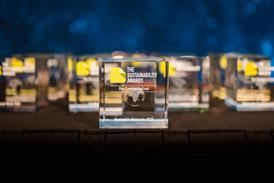
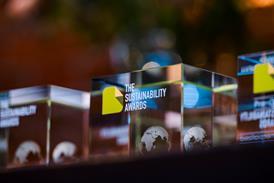
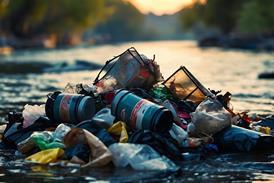
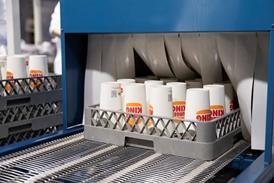











No comments yet